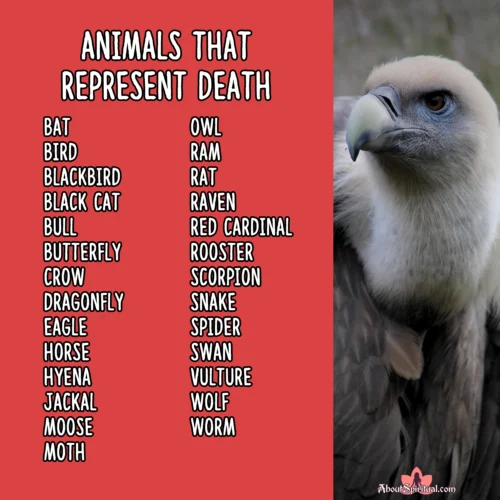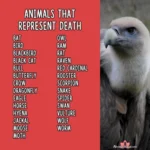Throughout the tapestry of literary and mythological narratives, one encounters a remarkable tapestry of creatures that evoke a myriad of responses. Some inspire reverence, while others stir unease. Yet, among these myriad symbols lies a question: What animal represents cruelty in literature and mythology? The exploration of this intricate relationship between animals and human emotions can reveal much about our own fears, prejudices, and moral dilemmas.
A pervasive symbol of cruelty that arises is the raven, often enshrouded in ominous lore. This bird, with its jet-black plumage and piercing gaze, has long been associated with death and foreboding in various cultures. In Edgar Allan Poe’s haunting poem “The Raven,” the bird serves as a relentless reminder of lost love and impending doom. Its persistent refrain of “Nevermore” embodies the cruelty of despair—a lingering pain that resonates within the human psyche. But, why does this avian messenger wield such power over our emotions? It is this duality that propels the raven into a realm of dark symbolism where it morphs from a messenger to a harbinger of cruelty itself.
Moreover, in Greek mythology, the figure of Cronus epitomizes another facet of cruelty—this time in its manifestation through power and domination. Cronus, the Titan who devoured his children to prevent them from usurping his throne, serves as a stark emblem of the inherent cruelty of fear and selfishness. His grisly actions reflect not merely personal ambition but the broader narrative of parental neglect and betrayal. The myth invites us to ponder: how does power corrupt, and what lengths will one go to maintain it? Such questions underscore a fundamental aspect of human nature: the propensity for cruelty when blindsided by fear and desire.
Intriguingly, the wolf also occupies a complex space in the arena of literary cruelty. Often demonized as the embodiment of savagery—consider the cruel portrayal in “Little Red Riding Hood”—this animal serves as a mirror of societal fears. In folklore, the wolf represents danger and predation, yet it is crucial to interrogate this representation. Is the wolf inherently cruel, or does it become a vessel for humanity’s own capacity for malice? The fairy tale cautions against naivety, warning of unseen threats lurking within the familiar. Yet, this narrative also exposes a more profound truth: societies often project their fears onto animals, embodying their darkest qualities instead of grappling with their own moral failings.
Further afield, in African mythology, the figure of the hyena presents an intriguing dichotomy. Often associated with scavenging and deceit, the hyena is a creature that embodies primal survival instinct. Stories portraying hyenas as cruel tricksters illuminate the human tendency to associate cunning with malevolence. Yet, this representation is rife with ethical ambiguity. Just as the hyena survives in the wild, one might argue that it reflects a raw survival instinct that exists outside of the human moral framework. Therefore, to label the hyena as simply cruel oversimplifies the larger narrative regarding survival, social structures, and the inherent brutality of nature.
The juxtaposition of these creatures begs a relevant inquiry. Are these animals genuinely malevolent, or do they merely serve as conduits for human emotions and societal fears? As we delve deeper into the symbolism of cruelty within literature and mythology, it becomes apparent that these animals embody more than just their traits—they reflect our subconscious struggles with aggression, power, and vulnerability.
Shifting towards a contemporary perspective, we can analyze the plight of the serpent in modern storytelling. While often depicted as malevolent beings in ancient texts, such as the tree-snake dichotomy in the Garden of Eden, recent interpretations have sought to redefine this trope. The serpent’s dualistic nature invites discussion around the themes of temptation and moral ambiguity. Is the serpent inherently cruel, or does it simply embody the complexity of choice? This modern reinterpretation encourages a more nuanced view of characters traditionally vilified in narratives. They force us to confront our own tendencies toward judgment and prejudice, shining a light on the cruelty we inflict upon others in our quest for understanding.
Ultimately, the discussion surrounding which animal represents cruelty in literature and mythology is not merely an exercise in categorization; it encompasses profound reflections on the human condition. Animals such as the raven, wolf, hyena, and serpent serve intricate roles, highlighting humanity’s fears, ambitions, and moral quandaries. As we contemplate these narratives, we are challenged to examine our own relationships with these creatures and, by extension, with the cruelty inherent in the human experience.
In asking which animal best symbolizes this cruelty, we must also inquire about the implications of such associations. Are these creatures to be feared, or do they offer insights into our own dark inclinations? The intersection of animal representation with themes of cruelty serves as a mirror reflecting our morality. As we navigate this complex terrain, we glean more profound wisdom—encouraging an understanding that perhaps cruelty is not merely an attribute of the animal kingdom but also a facet of ourselves.






